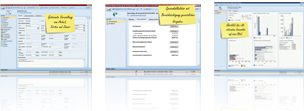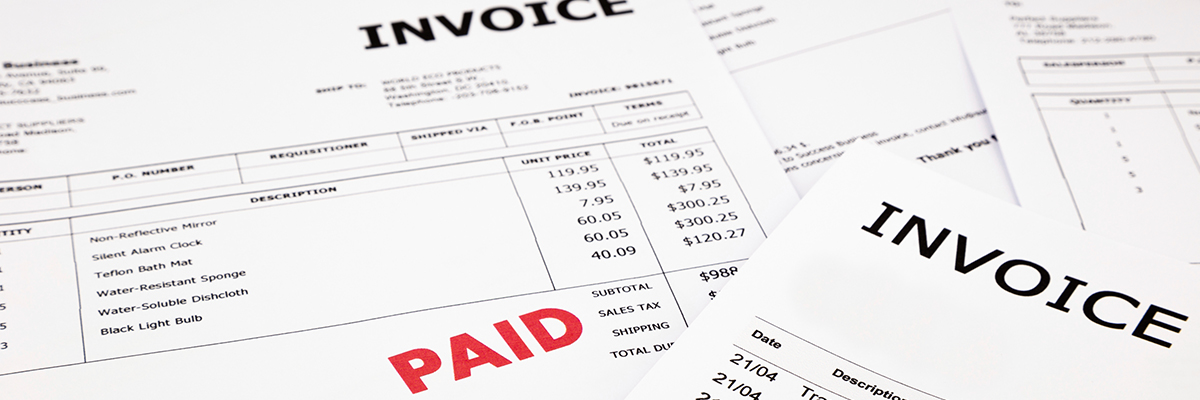Billing of customers, employees or external resources
The Facts
Dynamics Project Management Billing and Invoicing allows you to bill customers, employees and external service providers.
Invoices can be created based on milestones, partial payments and final payments as well as at cost (time and material).
Screen Gallery Highlights

Top Features
- Service Billing
- Fixed price
- Milestones
- Partial payments
- Time and material
- Timesheet
- Timesheet correction function
- Distinction between time needed and time billable
- Invoicing in CRM
- Automatic invoicing
- Reminder function
- Dunning
- Invoice printing in CRM
- Alternatively, Information transfer to an ERP System.
- Travel expense invoicing including management of receipts
Target group
- Project manager ⇒ customer billing
- Human Resources Department ⇒ employee billing
- Purchasing Department ⇒ billing external resources
Benefits
- More time:
High level of automation reduces administrative efforts - More safety:
Automation ensures accurate billing quality - More turnover:
Dynamics Project Management identifies outstanding balances that have yet to be billed (such as travel, external services or material costs) and automatically re-submits them for billing
Description
The Dynamics Project Management billing and invoicing feature allows you to bill project services directly to customers, employees and external service providers. Invoices can be created based on milestones, partial payments and final payments as well as at cost (time and material). Timesheets required in many industry sectors are generated by the system.
With the payroll functions, an Excel-like overview für all services in the selected period is available especially for billing at cost. This allows the project Managers or back office to quickly and easily correct employee' entries and decide about the billability to the customer. Creating seperate invoices for the same time period is also possible. Nevertheless, the system ensures the avoidance of double billing of services.
The billing function can automatically create and print invoicing directly in Microsoft Dynamics CRM, based on the timesheet. Alternatively, all applicable billing information are prepared for transfer to an ERP System.
Time and material billing can be done in three simple steps:
1. Booking preparation
All entered project services can be conveniently edited in one Screen and relevant billable Services can be marked. With just one click, spelling mistakes and incorrect calculations are eliminated.
A major highlight is the option to bill services separately from the entered work time.
2. Determination of the billing and creating time sheets
Services entered to a project can be billed in user-definable time periods (months, quarters or differing time periods). If needed, selected services can be marked for billing at a later time. These will be automatically re-submitted by the system for the next payment run.
Billing fixed-priced projects as well as projects based on time and material (or a combination of the two) is available. Functions are available for managing advance or partial payments.
Timesheets are automatically created at the touch of a button. Afterwards, timesheets can be printed or saved as a PDF or Excel file.
Travel expenses and times which are entered in a project can also be invoiced. For travel times, the payment mode (flat-rate amount per travel, pro rata hourly rate, fixed hourly rate, no billing) can be determined in the order. For travel expenses, there are also several invoicing options via the order (flat billing, receipt-based billing, no billing). Via the order and product list (products, price lists, etc.), it is defined which rates are included in the billing (e.g. mileage allowance).
3. Billing and invoicing conclusion
With just one click, time sheet entries are marked as billed so that they’re not systematically submitted in the next payment run. Additionally, the system generates a summary of all settled services by product level. This summary is used to create the invoice in the system. Transfers can be done manually, automated via workflows, through the web service of an ERP system (SAP, NAV, GP) or another accounting system like Datev or Quickbooks.
4. Invoicing
The preceding Dynamics Project Management service billing provides all the necessary billing data for invoicing. These are available for use in the Microsoft Dynamics CRM database, thereby creating two alternative options for further invoicing.
The first invoicing option is a printout directly in the CRM systems. A suitable report is included in the scope of supply. This report can be easily customized (logo, company address, etc).
The second option is to transfer relevant billing information to an ERP System.
Scope of functions for this component
Customer billing
- Simple billing of project services
- Integrated view for preparation, timesheet and billing itself
- Clear correction of all services before billing
- Partial payments for projects
- Billing fixed prices, time and material or a combination
- Generate automatic timesheets as basis for billing
- Adapt timesheets via parameters
- Totaling on sub-project Level in the timesheet
- Distinction between projected time and billable time
- Continuous integration in Microsoft Dynamics CRM pricing, product catalogue and order management
- Direct billing printout inMicrosoft Dynamics CRM (optionally, when using the billing entity)
- Manual transfer of invoice line items or transfer to an ERP system (optional)
- Create travel expense reports
Employee billing
- Employee performance report
- Billing monthly, quarterly or in differing time periods
- Compensation for travel expenses
Billing external service providers
- Performance reports of external resources (e.g. freelancers)
- Billing monthly, quarterly or in differing time periods
- Management of performance periods for financial administration
Invoicing
- Invoice printout directly in CRM
- Transfer billing information to an ERP System
- Distinction between intercompany invoices and external invoices
- VAT management, also according to foreign business activities
- Consideration of performance periods
